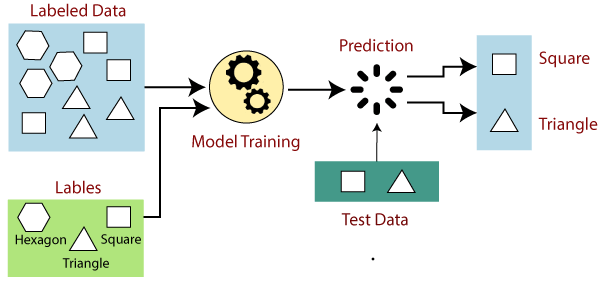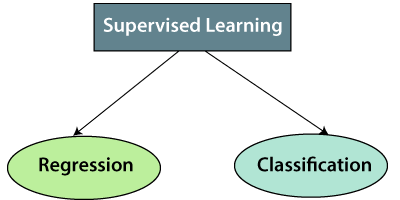Supervised Machine LearningSupervised learning is the types of machine learning in which machines are trained using well "labelled" training data, and on basis of that data, machines predict the output. The labelled data means some input data is already tagged with the correct output. In supervised learning, the training data provided to the machines work as the supervisor that teaches the machines to predict the output correctly. It applies the same concept as a student learns in the supervision of the teacher. Supervised learning is a process of providing input data as well as correct output data to the machine learning model. The aim of a supervised learning algorithm is to find a mapping function to map the input variable(x) with the output variable(y). In the real-world, supervised learning can be used for Risk Assessment, Image classification, Fraud Detection, spam filtering, etc. How Supervised Learning Works?In supervised learning, models are trained using labelled dataset, where the model learns about each type of data. Once the training process is completed, the model is tested on the basis of test data (a subset of the training set), and then it predicts the output. The working of Supervised learning can be easily understood by the below example and diagram: 
Suppose we have a dataset of different types of shapes which includes square, rectangle, triangle, and Polygon. Now the first step is that we need to train the model for each shape.
Now, after training, we test our model using the test set, and the task of the model is to identify the shape. The machine is already trained on all types of shapes, and when it finds a new shape, it classifies the shape on the bases of a number of sides, and predicts the output. Steps Involved in Supervised Learning:
Types of supervised Machine learning Algorithms:Supervised learning can be further divided into two types of problems: 
1. Regression Regression algorithms are used if there is a relationship between the input variable and the output variable. It is used for the prediction of continuous variables, such as Weather forecasting, Market Trends, etc. Below are some popular Regression algorithms which come under supervised learning:
2. Classification Classification algorithms are used when the output variable is categorical, which means there are two classes such as Yes-No, Male-Female, True-false, etc. Spam Filtering,
Note: We will discuss these algorithms in detail in later chapters.Advantages of Supervised learning:
Disadvantages of supervised learning:
Next TopicUnsupervised Machine Learning
|
 For Videos Join Our Youtube Channel: Join Now
For Videos Join Our Youtube Channel: Join Now
Feedback
- Send your Feedback to [email protected]
Help Others, Please Share










